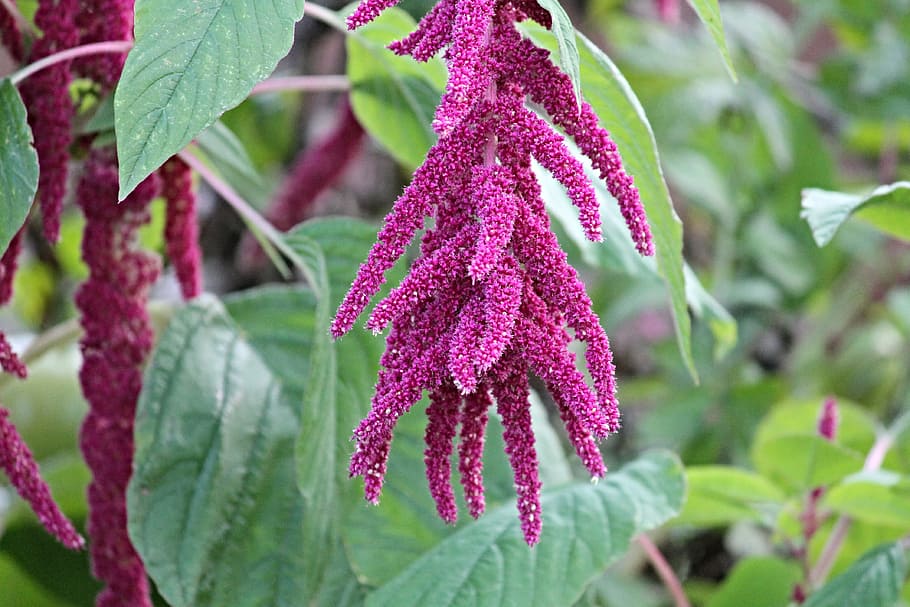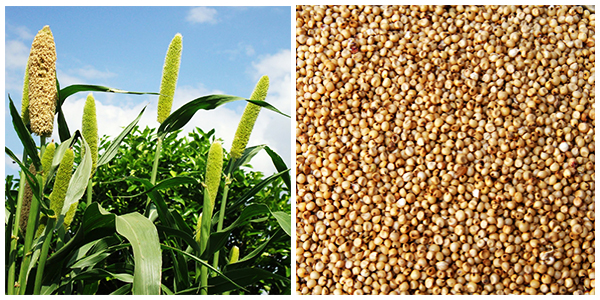All about Amaranth Grain.
Amaranth Grain is a bushy, tall plant whose seeds are edible. Species belonging to the genus Amaranths have been cultivated for their grains for 8,000 years. Similar to quinoa, amaranth belongs to the family of chard, beets, spinach and other weeds. Raw amaranth grain is inedible to humans and cannot be digested because it blocks the absorption of nutrients.It is not technically a grain but its nutritive value is similar to grains and is therefore enjoyed like grains. It has a porridge like texture and can be cooked with other types of grains. It can be used in many different ways i.e, popped out like corn, made into pasta, cooked as rice or simply powdered as flour. Amaranth, requires less water to cultivate, which makes it a useful alternative in regions of low rainfall/water supply. Being a weed, it also grows rapidly.

Usage of Amaranth Grain.
The root, leaves and stem of the amaranth plant are used for consumption as food.
The root of the amaranth is alkaline and has a little sweet milky taste.
The leaves of amaranth plant can be cooked and prepared in a variety of ways.
It is known as Chaulai in Bihar and Uttar-Pradesh, Where the amaranth plant leaves are utilized for preparing curries and gravies.
It's leaves can also be stir fried with spices and consumed as a Cheera.
These greens are steamed and seasoned in Tamil Nadu.
The leaves can also be used in a dal or a lentil gravy or it can be fried in chilies and onions.
The stem and leaves can also be used to create delicious soups and salads.
Amaranth acts a thickener for sauces, soups and stews.
The nutty, crunchy flavor of amaranth makes for an amazing snack.
The root of the amaranth is alkaline and has a little sweet milky taste.
The leaves of amaranth plant can be cooked and prepared in a variety of ways.
It is known as Chaulai in Bihar and Uttar-Pradesh, Where the amaranth plant leaves are utilized for preparing curries and gravies.
It's leaves can also be stir fried with spices and consumed as a Cheera.
These greens are steamed and seasoned in Tamil Nadu.
The leaves can also be used in a dal or a lentil gravy or it can be fried in chilies and onions.
The stem and leaves can also be used to create delicious soups and salads.
Amaranth acts a thickener for sauces, soups and stews.
The nutty, crunchy flavor of amaranth makes for an amazing snack.
Nutritional Value of Amaranth Grain.
1. The nutritional value of amaranth is similar to grains as well as green vegetables.
2. Amaranth is a rich source of protein containing two essential amino acids, Lysine and Methionine.
3. The protein content in the seeds of Amaranth is more than that present in rice, sorghum, and rye.
4. In addition to that, amaranth is loaded with iron, magnesium, potassium and calcium.
5. It's fiber content is also triple than that of wheat. This gluten free characteristic makes it freely digestible grain.
3. Amaranth also contains Omega-3, thereby regulating blood pressure.
4. The plant also has phyto-chemical compounds that helps lower hypertension and the risk of cancer.
2. Amaranth is a rich source of protein containing two essential amino acids, Lysine and Methionine.
3. The protein content in the seeds of Amaranth is more than that present in rice, sorghum, and rye.
4. In addition to that, amaranth is loaded with iron, magnesium, potassium and calcium.
5. It's fiber content is also triple than that of wheat. This gluten free characteristic makes it freely digestible grain.
3. Amaranth also contains Omega-3, thereby regulating blood pressure.
4. The plant also has phyto-chemical compounds that helps lower hypertension and the risk of cancer.
Related Searches for Amaranth Grains :
amaranth how to cook, amaranth meaning, amaranth recipes, amaranth benefits, amaranth in tamil, amaranth in hindi, amaranth nutrition, amaranth grain
Note : If you like our post please don't forget to to follow us to get regular updates on the new recipes which we publish and share it with your friends and family.
If you want some specific Indian recipes be publish on this blog kindly mail me at harsheelair@gmail.com
Note : If you like our post please don't forget to to follow us to get regular updates on the new recipes which we publish and share it with your friends and family.
If you want some specific Indian recipes be publish on this blog kindly mail me at harsheelair@gmail.com







0 Comments
If you like this blog than please comment and help us to improve.